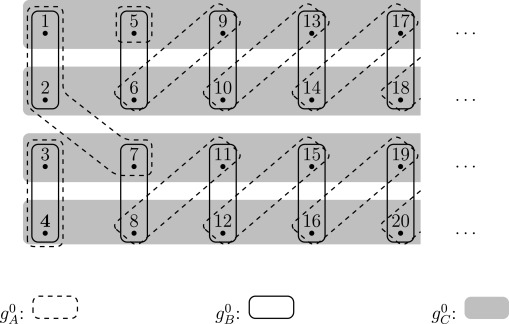Introduction
In the realm of decision-making, rationality and logical thinking are often considered essential. However, human psychology reveals that our judgments are susceptible to various biases and fallacies. One such intriguing mental model is Aumann’s Agreement Theorem, named after Israeli-American mathematician and Nobel laureate Robert Aumann. This theorem challenges our assumptions about consensus and highlights the irrationality that can arise when we prioritize agreement over objective reasoning. In this blog post, we will delve into the concept of Aumann’s Agreement Theorem, explore its prevalence in our lives, examine examples of its occurrence in personal, business, and public policy decisions, discuss contributing biases, and offer strategies to avoid falling prey to this mental trap.
Understanding Aumann’s Agreement Theorem
Aumann’s Agreement Theorem posits that rational individuals, given common knowledge and correct reasoning, cannot agree to disagree on a shared belief. In other words, if two people possess the same information, and both are logical thinkers, they should ultimately converge to the same belief through a process of iterative communication and updating of their beliefs. This theorem challenges our intuition that people with access to the same evidence may have different perspectives.
Relevance in Decision-Making
Aumann’s Agreement Theorem has profound implications for decision-making processes. It forces us to reevaluate the role of consensus and the weight we assign to it. Often, we seek agreement as a proxy for truth, assuming that if everyone around us shares a certain belief, it must be correct. This fallacy can lead to irrational decisions, as the prevalence of agreement may be driven by social pressure or conformity rather than objective evaluation of evidence. By understanding Aumann’s Agreement Theorem, we can recognize the dangers of relying solely on consensus and instead focus on the quality of evidence and logical reasoning.
The Occurrence of Aumann’s Agreement Theorem in Various Contexts
- Personal Life Decisions: Consider a scenario where a group of friends is discussing their future career paths. If one member expresses a strong preference for a certain profession, others may feel inclined to adopt a similar viewpoint. Over time, this group may converge on the belief that the particular profession is the best choice for everyone. However, by blindly following the consensus, individuals may neglect their own unique skills, interests, and aspirations, ultimately making decisions contrary to their best interests.
- Business Scenarios: In business settings, Aumann’s Agreement Theorem can manifest when decision-makers rely on the opinions of others without critically evaluating the underlying data and analysis. This blind adherence to consensus can lead to groupthink, where dissenting opinions are suppressed and alternative perspectives are disregarded. As a result, flawed strategies may be adopted, risks may be underestimated, and innovation may be stifled, hampering long-term success.
- Public Policy-Making: Aumann’s Agreement Theorem also finds relevance in public policy decisions. When policymakers prioritize consensus over rigorous examination of evidence, they risk overlooking potential alternatives or neglecting the needs of marginalized groups. This fallacy can lead to policies that perpetuate inequalities or fail to address complex societal issues adequately. By valuing agreement over diverse perspectives and critical analysis, decision-makers miss opportunities for more effective and inclusive policies.
Contributing Mental Biases and Psychological Underpinnings
Aumann’s Agreement Theorem is intertwined with various mental biases that influence decision-making processes
- Confirmation Bias: People tend to seek information that confirms their preexisting beliefs and opinions. In the context of Aumann’s Agreement Theorem, this bias can exacerbate the fallacy of consensus, as individuals actively avoid dissenting viewpoints that challenge the prevailing agreement.
- Bandwagon Effect: The tendency to adopt beliefs or behaviors because others hold them is a significant contributor to Aumann’s Agreement Theorem. The fear of missing out or being perceived as an outlier can lead individuals to conform to the consensus without thoroughly examining the evidence.
- Social Identity Theory: Aumann’s Agreement Theorem is also linked to social identity theory, where individuals derive their self-esteem and sense of belonging from group affiliations. When faced with conflicting beliefs, individuals may prioritize maintaining group harmony over independent analysis, reinforcing the fallacy of consensus.
Strategies to Avoid Aumann’s Agreement Theorem
- Encourage Dissent: Actively seek out alternative viewpoints and encourage constructive criticism. Foster an environment where diverse perspectives are valued, and dissenting opinions are encouraged rather than suppressed.
- Embrace Intellectual Humility: Recognize the limitations of your own knowledge and be open to revising your beliefs in the face of new evidence. Cultivate intellectual humility by actively seeking feedback and engaging in continuous learning.
- Evaluate Evidence: Prioritize objective evaluation of evidence rather than relying solely on the opinions or beliefs of others. Develop critical thinking skills and explore multiple sources of information to form well-rounded perspectives.
- Engage in Deliberate Reflection: Take the time to reflect on your own beliefs and decisions. Question the reasons behind your agreement with others and critically examine the evidence supporting your beliefs.
Conclusion
Aumann’s Agreement Theorem challenges our tendency to rely on consensus as a marker of truth and rationality. By recognizing the fallacy of consensus and understanding the psychological biases that contribute to it, we can navigate decision-making processes more objectively. Avoiding the pitfalls of Aumann’s Agreement Theorem requires fostering an environment that encourages dissent, embracing intellectual humility, and prioritizing evidence-based reasoning. By doing so, we can make more informed decisions that align with our best interests and contribute to collective progress.
